How hay was harvested in the past
Samnauner «Schupfa» and «Pilla»
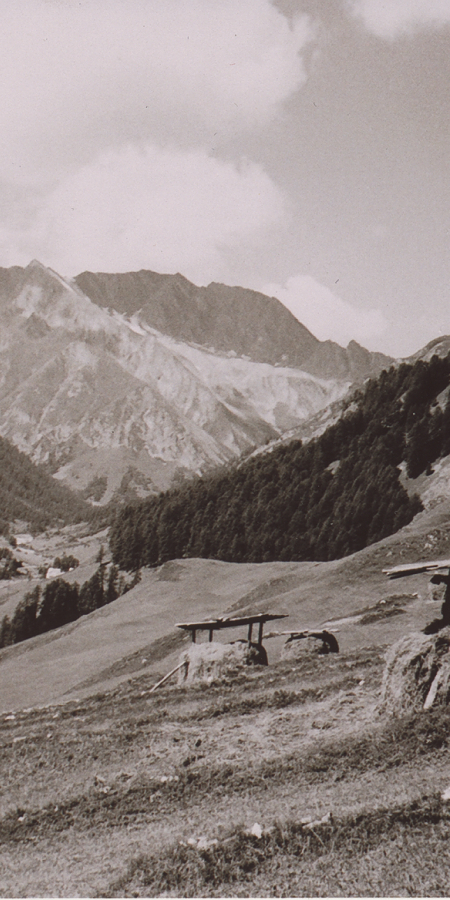
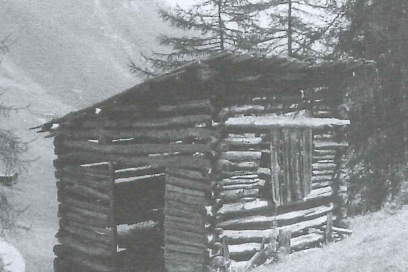
The «pilla»: These were used as modest weather shelters for drying and storing hay. This simple but efficient structure served agricultural purposes and allowed farmers to protect their hay from the effects of rain and snow.
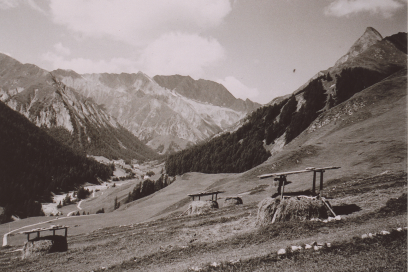
The «Schupfa»: These were also used as weather shelters for hay. In remote mountain meadows, the «pilla» or «schupfa» were also used as night shelters or as shelters when eating.
The filled hay cloths were carried to the intermediate camp in two ways, either with the tails (cloth corners) facing upwards, which was more suitable for short distances, or with the tails facing forwards for longer distances, as this way of carrying them allowed them to walk upright, leaving one hand free to support themselves in steep, difficult terrain if necessary.
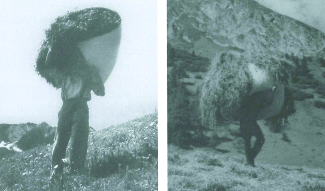
During longer periods of bad weather, mowing continued anyway due to time constraints. This delayed the bringing in of the hay, which could lead to a situation where several mountain meadows, some of which were far apart, were mown before the hay could be put into the intermediate stores. This often resulted in long, time-consuming journeys from one meadow to another. Because the plots of mountain meadows in Samnaun were also rather small, it was often necessary to carry the harvesting tools, hay cloths, cooking utensils and food supplies on shoulders and backs to the next mountain meadow. This often involved travelling long, trackless distances with heavy loads.
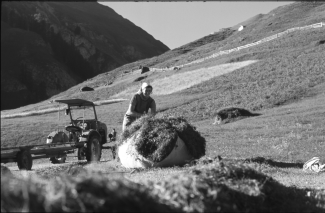
Separate cooking and weather protection huts were only available in very few cases. Until the first hay was laid, the "pilla", which was available in most of the high mountain meadows, offered at least a meagre shelter for cooking and eating meals.
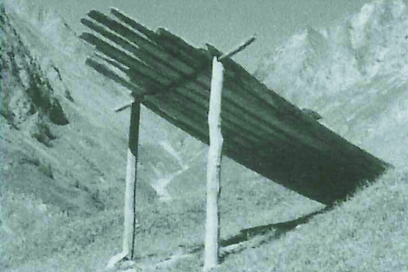
In areas where only one "Schupfa" was available, the "Schupfa" roof was supported on two of the four posts (this was called a "Tschock") to provide modest weather protection.
However, as soon as "Pilla" or "Schupfa" were covered with hay, the meagre meal had to be cooked and eaten outside in all weathers, unless a neighbour's shelter could be used. Cooking was usually done on a primitive fireplace built provisionally with stones as required.
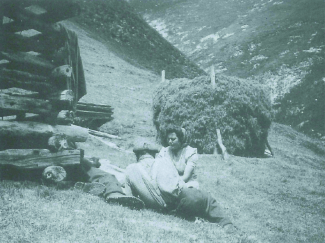
From time to time, more often for some, less often for others, the women or older children brought food to the mountain pastures at midday. There were also farmers who took a goat with them to deliver milk to the mountain pastures where they spent the night on the hay. If you had not yet brought your own hay into the pills, you were willingly given hospitality for the night by neighbours who had already laid hay. Spending the night together in the hay provided a welcome opportunity to discuss and talk about all sorts of things before going to sleep. If there was no opportunity to camp for the night in the neighbourhood or further afield, you had to walk for hours to get home and back the next day. This simple life was lived throughout the working week, which lasted from Monday morning until Saturday evening.
Vital Jäger with his goats on the way to the mountain meadows
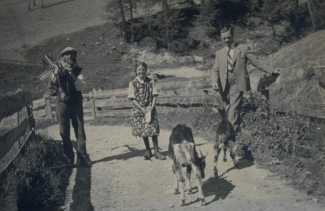
In the autumn, after all the work in the fields and plots had been completed, the farmers began to collect the hay, which was temporarily stored in the «Schupfen» (a non-winterproof building) during the summer months.
Only in late autumn or winter was the stored hay taken from the «Pillen» (temporary storage) to the village barn.
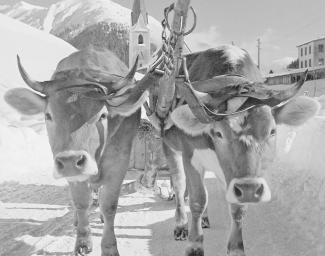
Around Samnaun village alone there used to be over 40 panna dung barns. When the farmers from the lower fractions (villages) collected the hay in Samnaun, a panna dung (transport device on skids) was transported to Samnaun on the outward journey with the mejn (draught animals, cattle or oxen) and two sheets of hay were taken home on the way home.
Panna
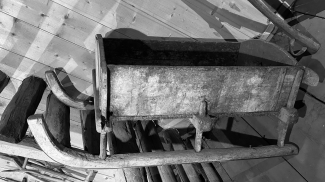
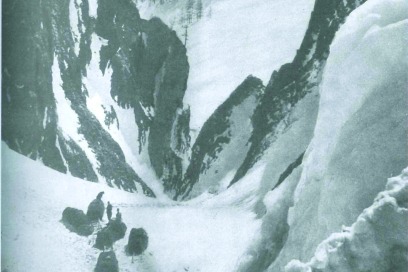
The hay from the high mountain meadows was only collected towards the end of February, after the snow cover had settled and it was safe to climb up. The hay was not packed in hay cloths for transport, but in bales. A hay track (similar to a bobsleigh run) was laid out in advance for transport down into the valley.
Unfortunately, the knowledge and experience required to carry out all this rather demanding work has largely been lost.
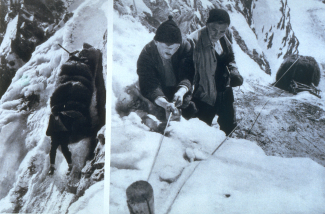
The working days were long and hard, the rations very simple, a very modest life. And yet, at least from today's perspective, the whole thing also has a romantic side and you feel a certain regret that these times are probably gone forever.
Here you can find the locations of the Samnaun pills
Online map
PDF for download
The working days were long and hard, the rations very simple, a very modest life. And yet, at least from today's perspective, the whole thing also has a romantic side and one feels a certain regret that these times are probably gone forever.
Source text: Arno Jäger / About the old life in Samnaun Karl Jenal-Ruffner
Copyright pictures: From the old life in Samnaun and the municipality of Samnaun